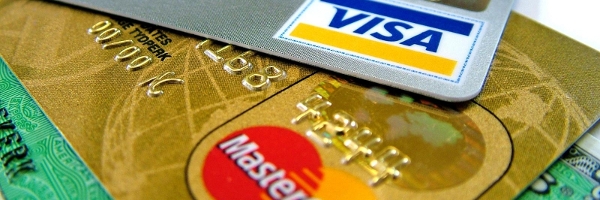
Fintech and mobile payments are segments that I find very interesting. That is why I decided to write an article summarizing the developments in the field.
Before getting started, notice that we could split mobile payments into three sub-segments:
1. P2P payments (i.e., money transfer using a mobile phone, app or SMS)
2. Remote payments (i.e., purchasing something on a mobile website or app)
3. In-person payments (i.e., payment for something at a store with your phone)
I am focusing on the third sub-segment in this report, and whenever I mention “mobile payments,” know that I mean “in-person mobile payments.” That is also the reason why I won’t talk about services like the Kenyan M-Pesa. Despite being hugely successful, it works predominantly as a P2P money transfer platform.
Summary
We started hearing the mobile payments buzz back in 2011 (when both Google Wallet and Square were launched), but until 2014 it hadn’t delivered on its promise.
Virtually every single multinational company with a horse in this race (e.g., banks, tech companies, phone carriers, large retailers) experimented with one form or another of mobile payments, but so far no de facto standard has emerged, and few solutions gained customer adoption.
Some publications, including TechCrunch and TechRadar, claim that 2015 will finally be the year when mobile payments will gain mass adoption, in large part thanks to Apple’s and Starbucks’ efforts in this domain. This remains to be seen, as there are reports stating that 85% of iPhone 6 users still haven’t used Apple Pay.
Most players are betting on the NFC technology, though Samsung and Starbucks have alternative strategies (more on this below).
Mobile Money vs. Mobile Wallet
It’s important to differentiate between these two terms. A mobile wallet, such as Apple Pay or Google Pay, usually works as a layer on top of an existing credit card or bank account. We could therefore say that those technologies are not revolution but rather evolutionary, as they are simply offering more convenience and other services on top of existing infrastructure.
Mobile money, on the other hand, refers to services and products that allow mobile users with no bank account or credit card to store money directly on their phones, which in turn allows them to earn interest, pay for goods and services and transfer money to other people. This is a revolutionary concept, as it fills the gap of people who in the past were not able to have a bank account and were excluded from many financial services.
Important Numbers
5.2 billion mobile phone users at the end of 2014
-73% of penetration worldwide
-Of those, 40% are smartphones, 60% are feature phones
74.5 million iPhone 6 sold in Q1 2015 alone
-85% of iPhone 6 users still haven’t used Apple Pay
650 million NFC-enabled phones around the world
-5% of those will be used on a regular basis to make payments
-Not much, but much better than 0.5% reported in 2014
2.5 billion people around the world without a bank account
-Of those, 1 billion have access to a mobile phone
Main Players
American Express: The company is experimenting with facial recognition and wearables as authentication and authorization methods. Additionally, it wants to go after customers who don’t have or don’t want credit cards, and instead want to use their mobile phones to make payments. It hasn’t officially announced any app or solution yet, though.
Android Pay: Google announced Android Pay at this year’s Google IO conference. It works pretty much like Apple Pay, using NFC to perform in-store transactions. At selected retailers, loyalty points will be automatically collected upon checkout. It will be available at 700,000 store locations and 1,000 Android apps.
Apple Pay: Users with iPhone 6 and iPhone 6 Plus (NFC enabled) are able to pay in stores with contactless terminals. Apple claims that within its first three days, over 1 million credit cards were registered on the service. In my opinion it’s the solution with the highest chance of becoming the de facto standard for iOS users.
CurrentC: A solution that combines mobile payments with loyalty benefits. It’s being proposed by a company called MCX, which is owned by a consortium of large US retailers, including CVS, Best Buy, Lowe’s, Sears, Target and Walmart. The app only works with debt cards, and it will initially rely on QR codes. In my opinion it’s doomed to fail exactly because of the last two points.
Jawbone: The creator of the fitness tracker wants to get a piece of the mobile payments pie. In partnership with American Express, it launched a solution that allows users to link their Amex cards with their UP4 fitness tracker and to pay via the NFC technology on selected stores.
Messaging Apps: A wide range of mobile messaging apps already allow users to make payments and transfer money from inside the app, especially in eastern countries. Examples include Line, WeChat and KakaoTalk. Facebook is getting aboard in 2015 with Messenger Payments.
PayPal: The company already has several solutions for remote mobile payments, but it still has to wait its in-person payment solution. There are rumors that Paypal is planning to acquire Paydiant, a company that developed branded mobile payment solutions for third parties. PayPal is also planning to sell NFC terminals to merchants.
Samsung Pay: The Korean giant revealed in March that it plans to use two technologies on its payment solution: NFC and MST (magnetic secure transmission). The Galaxy S6 devices already come with the latter technology. Samsung expects to beat Apple Pay exactly because of the MST technology, as it allows users to pay even when the merchant doesn’t have an NFC-enabled terminal. Samsung Pay starts working this summer in the US and Korea.
Square: The company first launched a mobile payments play in 2011, called Square Wallet. It failed to gain user adoption. Then in 2014 it launched Square Order, an app that allowed users to pre-order drinks and food. It failed as well and was shut down early in 2015. The company is now focusing on Square Cash, a P2P money transfer app. Square Register, it’s Point-of-Sale solution for small businesses, is doing great on the other hand.
Starbucks: According to Wired and Forbes, Starbucks is the master of mobile payments, not Apple or Google. According to the company, it was responsible for 90% of all mobile payments in the US in 2013 (estimated at $1.6 billion). Basically Starbucks users add funds with a credit card, and then use the Starbucks app or iOS Passbook to pay for whatever they consume at the stores. Consumers also earn loyalty points whenever they use the app, which clearly helped to drive adoption.
Sources:
http://techcrunch.com/2015/04/19/the-year-of-mobile-payments/
http://www.cio.com/article/2912896/mobile/the-state-of-mobile-payments-in-2015.html
http://www.pymnts.com/in-depth/2015/apple-pay-adoption-improving-but-still-a-long-way-to-go/
http://www2.deloitte.com/global/en/pages/technology-media-and-telecommunications/articles/tmt-predictions.html
http://www.kpcb.com/internet-trendshttp://mobile.blogs.wsj.com/cio/2015/04/09/american-express-lab-testing-facial-recognition-technology/
http://www.wired.com/2014/11/forget-apple-pay-master-mobile-payments-starbucks/

Leave a Reply